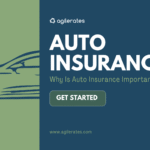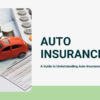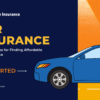Starting to drive is an exciting milestone, but navigating the world of car insurance as a new driver can be a bit overwhelming. If you’re new to this, don’t worry—you’re not alone. Here’s a breakdown of how car insurance works for new drivers, and what to expect when you start shopping for coverage.
1. The Basics of Car Insurance
Car insurance is designed to protect you financially in case of accidents, theft, or damage to your car. At its core, car insurance offers protection in three main areas:
- Liability: Covers damage or injuries you cause to others.
- Collision: Covers damage to your car in case of an accident.
- Comprehensive: Covers non-collision damage (like theft or weather damage).
For new drivers, liability coverage is usually a must-have, while collision and comprehensive might be optional, depending on your car’s value and the level of protection you want.
2. How Insurance Rates are Determined for New Drivers
Insurance rates are influenced by several factors, and for new drivers, premiums can be pretty high. Why? Insurance companies see new drivers (especially young ones) as high-risk, simply because they lack experience behind the wheel.
- Age and Experience: The younger and less experienced you are, the higher your rates. Insurance companies have tons of data that show younger drivers tend to have more accidents.
- Driving Record: Since you’re a new driver, you likely don’t have a driving record yet. That means your insurance company has nothing to base your risk on, which can make them charge you higher rates until they can assess your driving habits over time.
- Type of Car: The car you drive matters a lot. Sports cars or luxury vehicles typically cost more to insure because they’re more expensive to repair or replace.
3. Types of Car Insurance Coverage
You’ll need to choose what types of coverage you want. Some of the most common options include:
- Liability Insurance: This is usually the minimum requirement by law. It covers any damages or injuries you cause to other people or their property.
- Collision Insurance: Helps pay for repairs to your car if you’re at fault in an accident.
- Comprehensive Insurance: Covers things that aren’t accidents, like theft, vandalism, or natural disasters.
- Uninsured/Underinsured Motorist Coverage: Protects you if you’re hit by a driver without insurance, or not enough insurance.
New drivers are often advised to consider collision and comprehensive coverage, especially if their car is new or valuable. But make sure you’re not over-insuring—sometimes it’s just better to get the basics covered until you gain more experience.
4. Discounts for New Drivers
Some good news: there are ways to lower your insurance premiums as a new driver! Here are some discounts you may be eligible for:
- Good Student Discount: If you maintain a certain GPA (usually a B average or better), you might qualify for a discount.
- Driver’s Education Discount: Completing a driver’s ed course can make you seem less risky to insurers.
- Telematics Insurance: Some insurers offer discounts for good driving behavior. You’ll have to install a device in your car that tracks how you drive. If you’re safe and responsible, your rates can drop.
5. Minimum Requirements by State
Each state has its own minimum car insurance requirements. You’ll need to check what your state requires and at least meet those minimums. If you’re financing or leasing your car, the lender might also require more extensive coverage (usually collision and comprehensive).
6. What to Do When Shopping for Insurance
As a new driver, it’s important to shop around. Don’t settle for the first quote you get. Here’s how to approach it:
- Get multiple quotes: Use comparison websites or talk to different insurance companies to find the best price.
- Consider bundling: If you have other types of insurance (like renters or homeowners insurance), consider bundling them with the same provider to get a discount.
- Ask about discounts: Don’t assume you’re not eligible for discounts. Insurance companies offer different discounts, and you should ask to see if you qualify for any.
- Choose your deductible carefully: A higher deductible can lower your premium, but it means you’ll pay more out of pocket if you get in an accident. It’s all about finding the balance between what you can afford monthly and what you can afford to pay if something happens.
7. The Importance of Building a Good Driving Record
The longer you drive without accidents or traffic violations, the lower your insurance premiums will be over time. Avoid speeding tickets and accidents, and you’ll see your rates go down as your driving history improves.
Conclusion
Car insurance for new drivers can be expensive, but it’s a necessary step to protect yourself, your car, and others on the road. By choosing the right coverage, taking advantage of discounts, and maintaining a clean driving record, you can lower your rates over time. Don’t be afraid to shop around and ask questions to make sure you’re getting the best deal possible.
Stay safe on the road, and remember—insurance is an investment in your future peace of mind.
















